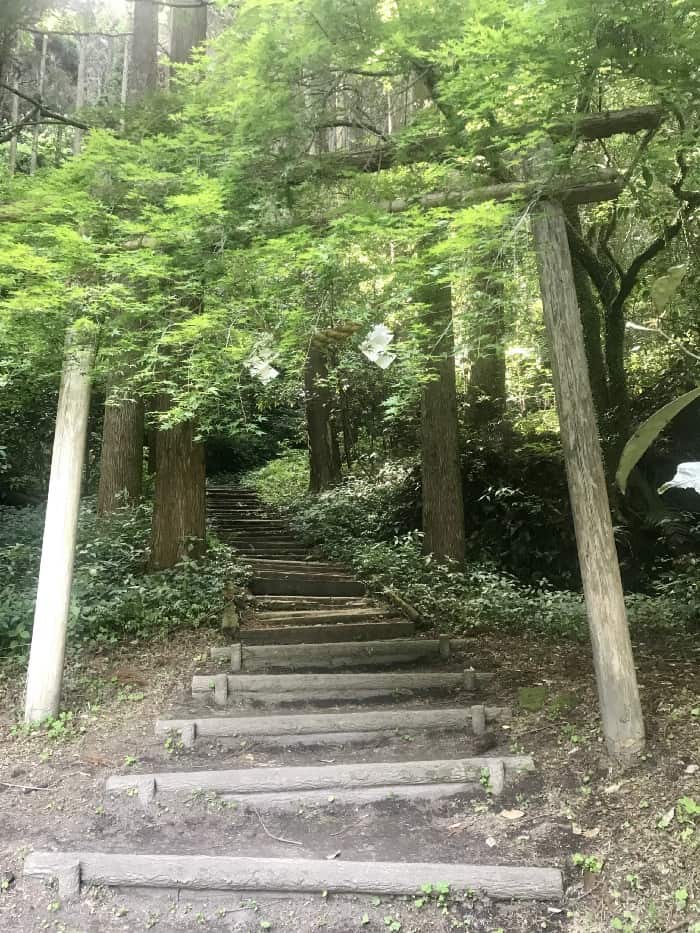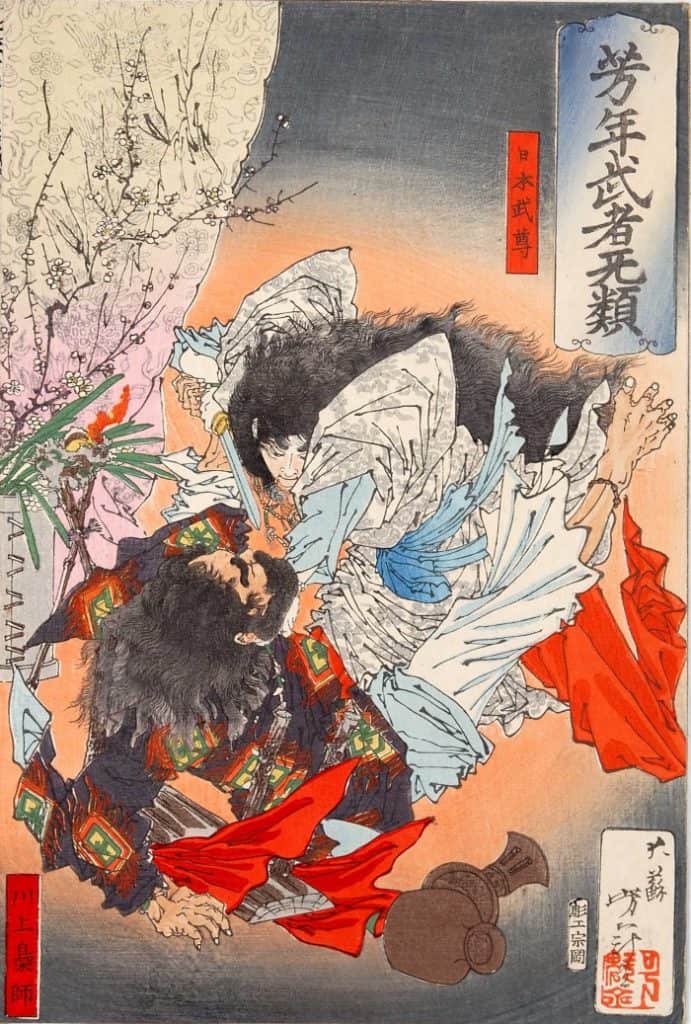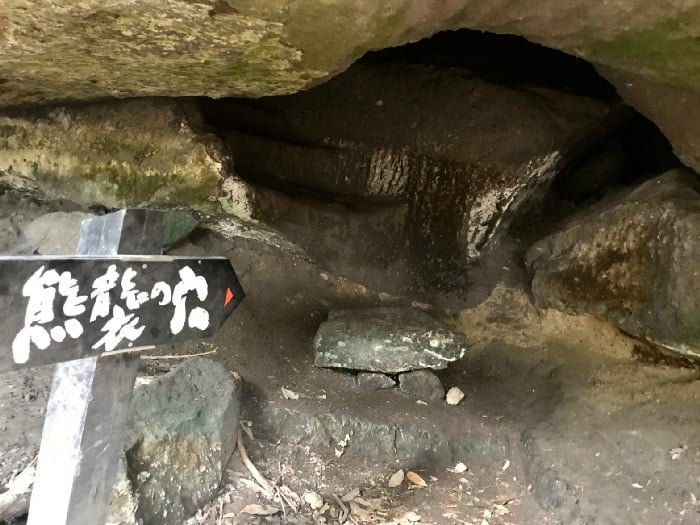Cave of the Bear-People, Kumaso no Ana
Climbing up a steep path in the forests of Kirishima, in the southwestern Japanese prefecture of Kagoshima, one comes upon an amazing cave with an interesting history.

Long ago, southwestern Japan was inhabited by a fierce people called the Kumaso, led by Kawakami Takeru, who lived in an extensive cave. Kuma means “bear,” and some scholars suggest that these people were called kuma, or “bear-like,” due to their violent interactions or because of the distinctive physical appearance of this ethnic group. So refers to the ancient country that was once southwestern Japan. Kawakami’s name, Takeru, is an honorary title meaning a “brave and valorous person.”

Southern Kyushu is a mountainous region formed by ancient volcanic eruptions. The pyroclastic sediment that makes up its soil is not suitable for growing rice, the main occupation in Japan from the Yayoi Period (roughly 600 BC to 300 AD*).
The Kumaso were said to sweat blood in their efforts to grow rice, half of which was required to be paid as tribute, brought to the capital in far away Yamato, now Nara Prefecture. This onerous task had become too much for the Kumaso.
Enter, the Prince
Because of their neglect to send tribute, Keiko, the 12th emperor, sent his 16-year-old son, Ousu-no-Mikoto (小碓命), to subjugate the independent Kumaso.
At that time, the leaders of the 55 tribes of southern Kyushu had gathered for a party in Kawakami’s enormous cave, the interior of which was measured at 1,000 tatami mats (1,653 square meters).
Ousu arrived as the party was underway. Knowing that Kawakami was too fierce to defeat in battle, at the peak of festivities, the fair-skinned and courtly-mannered Ousu put on women’s clothing and joined the women in pouring drinks for the men.
When Kawakami saw Ousu, he said, “I have never seen such a beautiful woman before! Come, drink with me,” and he led Ousu into a private cavern.
Pretending to pour Kawakami a drink, the disguised Ousu stabbed him in the back.

Kawakami cried out, “Who are you?”
“I am the son of the emperor. I have come to kill you for your defiance in refusing to pay tribute.”
Kawakami said, “You are a better man than I. Your name, Ousu, is too small for you. Please accept my name and become ‘Yamato Takeru.’” (小碓, Ousu, means “small millstone.”)
As Ousu received this honorary name, Yamato Takeru, “brave leader of the Japanese people,” Kawakami’s younger brother entered the room. Ousu stabbed him. He cried out. Hearing this from the next cavern, the 55 drunken tribal leaders rushed in. Shocked to see a woman holding a bloody sword beside the dying Kawakami and his dead brother, they readied their swords to attack.
The wounded Kawakami spoke, “Do not harm him. This is the emperor’s son. He has righteously come to kill me because of my refusal to pay tribute. I have given him my name. See that he makes it safely back to his father.”
Then, breathing his last breath, he declared, “From this day, the Kumaso tribe is dissolved.”
Thus, the last leader of the Kumaso, Kawakami Takeru, died.
The tribal leaders obeyed the final words of Kawakami, and they saw Yamato Takeru safely back to his father, Emperor Keikō.
Kawakami Takeru’s cave today

You can visit Kawakami’s cave today. Although the huge cavern where Kawakami lived is now blocked by a rockfall, the smaller 10 by 22 meter outer cave is accessible. It has been made a Shinto holy place.

Perhaps as a nod to the Kumaso’s Austronesian origins and their rock paintings, in 1990 the cave was decorated with modern-style murals, painted by Sakurajima native, Hagihara Sadayuki.
The Kumaso Cave is located about 15 minutes from Kagoshima Airport.
*Although most history books date the Yayoi period from 300 BC to 300 AD, recent archeological evidence has shown that the Yayoi period (characterized by the introduction of wet-field rice farming from Korea) started at varying dates throughout Japan. In northern Kyushu, the date is now from 900 BC, in southern Kyushu from 600 BC, the Kansai region from 800 BC, the Kanto area from 500 BC, and the Aomori area from 400 BC.
If you have questions about Japan or suggestions for articles, please add them in the comments. For more photos and information on Japan, follow me on instagram at: https://www.instagram.com/more_than_tokyo/




